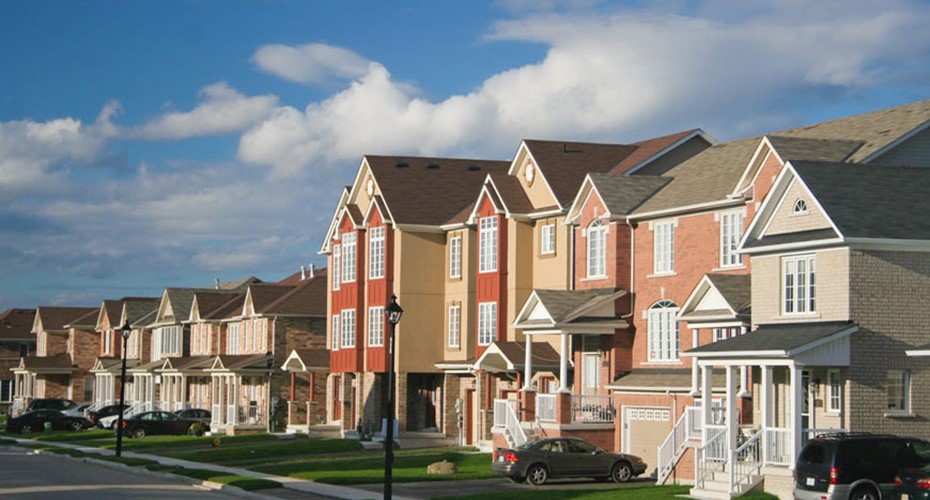Scarcity and productivity

It has been mildly interesting having a skim through the productivity commission report and various commentaries. The issues have been obvious for the past 10 years and the fact we need a 260-page report from a productivity commission to tell us what we already know is ironic. A property’s value will be a function of the cost of construction and the value of the land. Land value is fundamentally driven by scarcity. Given our small population we have plenty of land, so scarcity is “man-made” and driven by council urban planning. One paragraph, problem solved.
The commission has called for more land to be released on the urban limits. I understand this logic, but seems a bit shortsighted to me. There is plenty of land within the urban limit if we made it easier to do medium density developments. The problem is not with land per se it is with how difficult and expensive we make it to do anything with the land. We have ended up with lots of 500-700sqm sites around Auckland that cannot be easily developed. There is also plenty of fringe commercial land screaming out for more intensive development. At the moment it is too hard and too expensive. Even the Government participates in the same stupidity.
I purchased a property off Transit NZ on Hendon Avenue. It was the only sub divisible on the street. At the time I enquired about doing a bulk purchase allowing me to then do more intensive development along the street. I wasn’t asking for a discount, simply certainty of supply. It is very hard to buy one property, not knowing if you’ll get the property next door and for how much. They insisted on selling every property individually into the market. The outcome is more of the same. Surely a bit of foresight would have been to encourage better-planned development in the area.
The cost of subdividing land is ridiculous. I’ve just subdivided the section on Hendon Avenue at a cost of $85,000. Going forward the council will now receive an extra $2,000 per year in rates. That should keep them happy. If that’s not enough they extracted a $25,000 development contribution and we had to pay another $7,000 in fees for the council to pass judgment on the work of our professional engineer, architect and planner. These costs don’t impact on the developer. They either reduce the amount of building activity by making it uneconomic, or they end up in the land price. The consumer always pays for inefficiency. Council land values (CVs) don’t help. I’m aware of a property on the market that is 2,500sqm and has a CV of $1,100,000 mostly based on its land size. It isn’t worth close to that. The land itself could only take 3-4 town houses that would sell for $550,000 max. You’d have to remove the existing house, so the cost of getting the land ready including council subdivision costs would be $300,000. The cost to build 4 town houses would be around $1,100,000 and you’d have another $200,000 of other project costs related to finance and legal and sales. This would put the value of the property at $600,000. How can you have a CV of $1,100,000 and a true value of $600,000? The owner and agent think the property is worth $1,000,000. My prognosis is that it will either sit on the market until the owner dies, or they’ll joyously stumble on a naive investor who thinks it’s worth its CV! (Getting rid of the ability to offset losses against personal income would sort these guys out!)
A simple step forward would be for the council to properly adjust CV land values for development costs. A dose of realism wouldn’t go amiss and probably scare a large number of landowners that treat CVs as gospel. The other factor I need to pass comment on is construction costs. Excuse me while I bend over. Construction costs are way too high in New Zealand and you can kiss goodbye to the “spec” home. As a lot of clients are discovering you cannot easily build an architecturally designed home for less than $600,000 these days and that’s just for the house. The productivity commission pointed to small builders not having scale, which is true but has always been true. With scale and efficiency it is possible to get build cost down to around $1,200sqm. However, scale is only part of the productivity issue. I also think we have a virtual monopoly when it comes to supply of materials. Build costs have increased by 30% in real terms in the past 9 years. I wonder to what extent manufacturers spreading their costs over lower volume cause this. With no competition manufacturers can get away with brazen unit cost increases. Hence we see building activity slowing down and prices going up! If you want to build or subdivide, or you’re buying a sub divisible site, make sure you know your numbers. The good news for homeowners is that with very few houses being built, prices will remain strong.
Receive updates on the housing market, interest rates and the economy. No spam, we promise.
The opinions expressed in this article should not be taken as financial advice, or a recommendation of any financial product. Squirrel shall not be liable or responsible for any information, omissions, or errors present. Any commentary provided are the personal views of the author and are not necessarily representative of the views and opinions of Squirrel. We recommend seeking professional investment and/or mortgage advice before taking any action.
To view our disclosure statements and other legal information, please visit our Legal Agreements page here.

